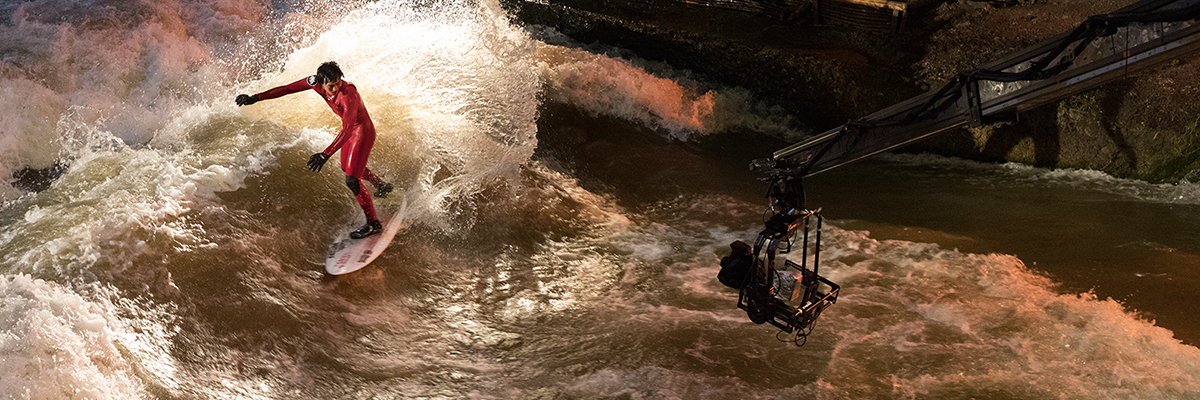
Shooting Munich’s City Surfers with Tom Rijpert and Serge Teulon
“One moment you’re in the middle of the city and the next you’re inside this surfing community”. - Tom Rijpert, Interactive Film Director
We’re sitting by the side of the river Eisbach in Munich with interactive film director Tom Rijpert and his Director of Photography (DOP) Serge Teulon. The sun’s out and it’s surprisingly warm for April even if the temperature of the water is still a chilly 4ºC. It’s the last day of the City Surfers shoot and while there’s a legion of crew preparing for the arrival of our surfers, we’re taking five to talk to Tom and Serge about the experience and specifically the EOS C300 Mark II.
Tom begins:
“When we first got the brief we were all very interested because a lot of it is totally new. We really love diving into new technology to give users a new type of experience”.
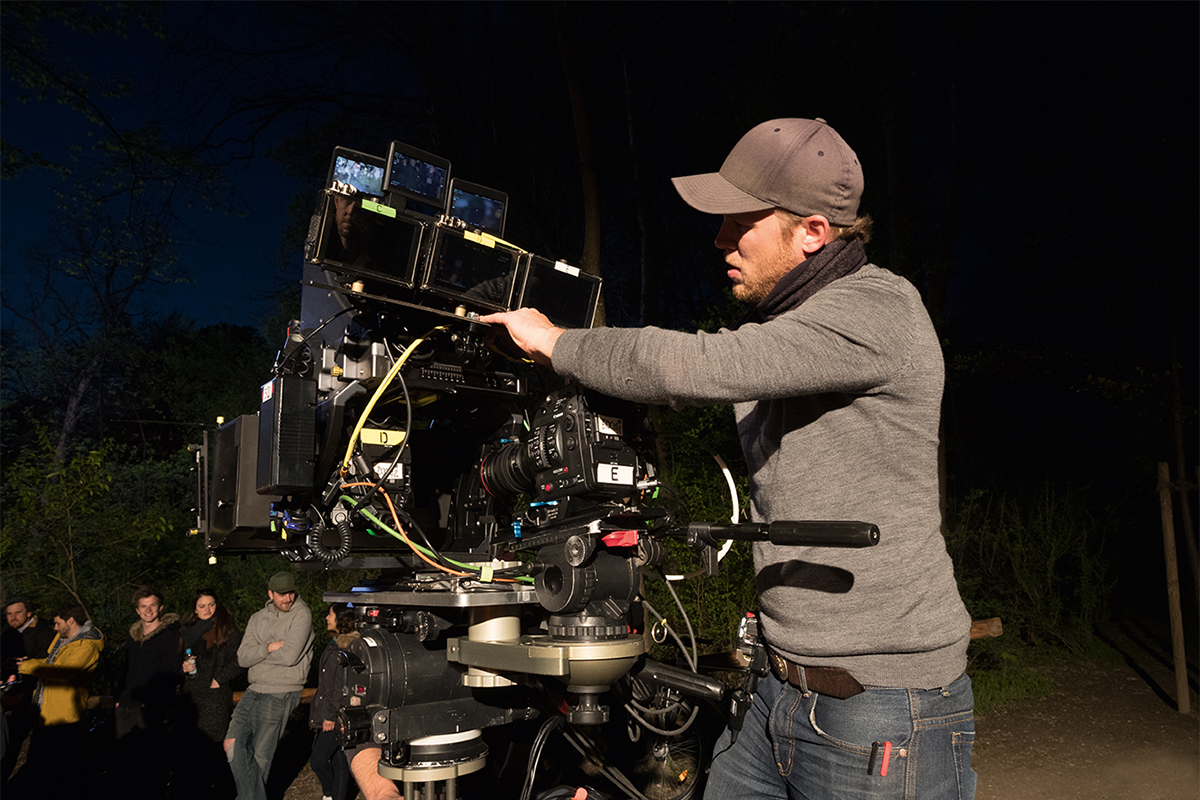
But for Tom, technology is only a means to an end. He wants to place you right in the moment to the point where the technology fades into the background and all you’re left with is a real human story.
“From a story perspective this whole surfing community is a really interesting sub-culture to present to viewers plus it's basically something that can be found round the corner. It's essentially about normal people doing these extraordinary things which is a great opportunity for photography or in our case simulation of photography”.
The Eisbach is an open set with over a hundred surfers hitting the wave everyday. When it comes to his subjects, Tom couldn’t have asked for better than Tao, Karina and Alex.
“They have been really helpful in getting us inside the surfing community. It’s a tight knit community and normally they’re not too cool with commercial video shoots because there is always something happening around their river and that’s the way they see it, as their river.”
Serge also loved the potential of our City Surfer location:
“The fact that it’s in the city meant you can see buildings around you, you can see cars going around in the back of the frame, but we also have an angle where it makes it very personal with the surfer. We’re able to put the camera at pretty much water level in front of the surfer and I think that really gives us that sense of being with the surfer on the wave”.
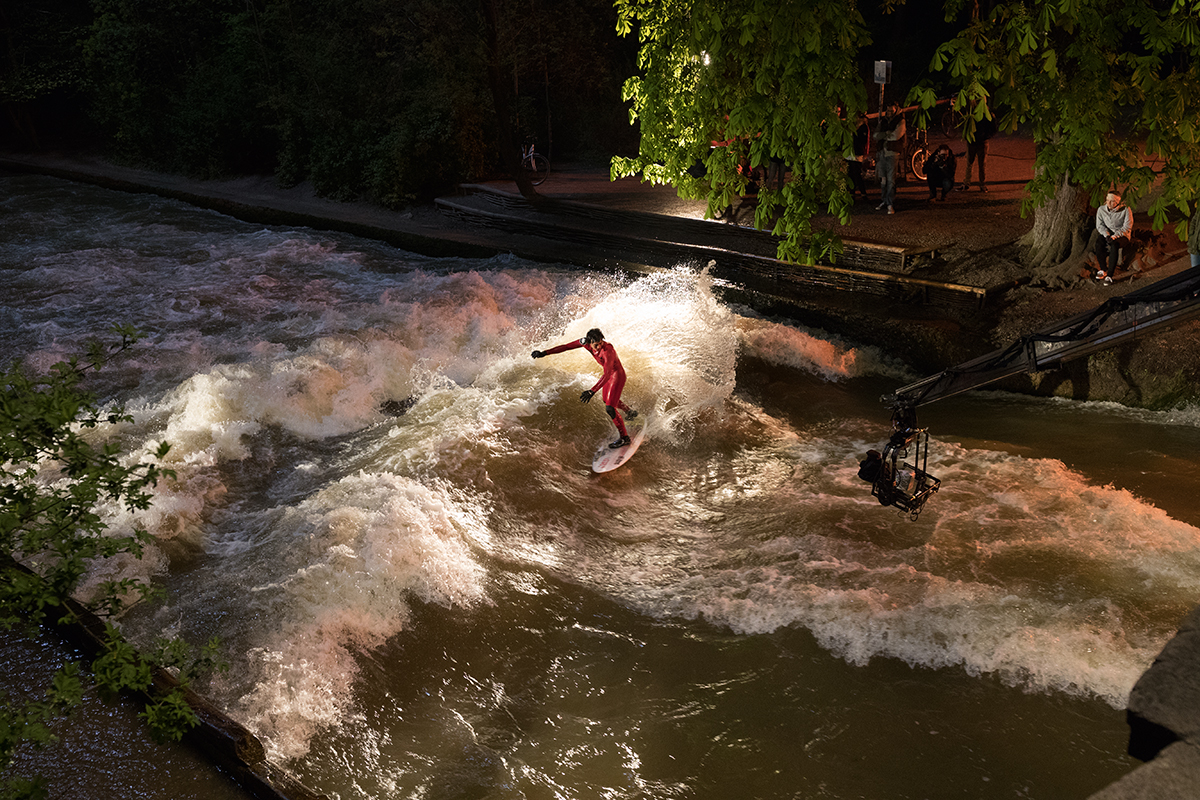
But for Serge the challenge lies in lighting the Eisbach:
“When you’re filming you have always got to create the environment, so you have to light it. You can’t just rely on the natural light or the city lights, you have always to augment it. We’ve tried very hard not to create too different an environment because you don’t want people to feel like they could never take that photograph. We didn’t want to make it look heavily staged or heavily lit so our job was to basically try and make it look realistic. To do that we’ve matched the colour of our lights with those of the street lights on the bridge. The backlight is effectively moonlight. I’ve used 2 helium balloon lights, one tungsten at the front on top of the bridge and another one behind, daylight balanced. I then have four workman lights put on a scaffold pole along the bridge and then on top of that we have four 10k’s on the bridge as well, and two, 5k’s on the sides of the river pointing towards the surfers”.
While some filmmakers like to push their cameras to the limits. Interactive film director, Tom and Serge, went one step further as they invented totally new, custom rigs for the EOS C300 Mark II to bring this vision of Munich’s City Surfers to life. The whole interactive experience combines so many different, emerging film techniques that it required extensive testing, as Serge tells us:
“So through shooting different rigs and different angles we did a really extensive scout of the location. We took loads of stills from different sides of the wave, from the centre, from the right, from behind, anything that could give us a bit of a different angle while still translating Tom’s creative vision”.
Tom begins to take us step-by-step through how they are using a whole range of Canon cameras to build the custom rigs which underpin the whole experience. First he starts with the 180º rig:
“For shooting 180º the big challenge is that so much is in frame, I’m talking about lighting, crew, bystanders things we wouldn’t normally want. It's a completely different way of thinking and framing your shots”.
Serge adds:
“We initially tried two EOS C300 Mark II cameras with very wide lenses and then we tried one camera with a fisheye. We found the one camera with the fisheye lens made us quite autonomous. It allowed us to use standard equipment to get the camera close to the water and to be able to protect it in situations where we were near the water. More importantly, creatively, it gave us a really defining look, which we think really adds to the film”.
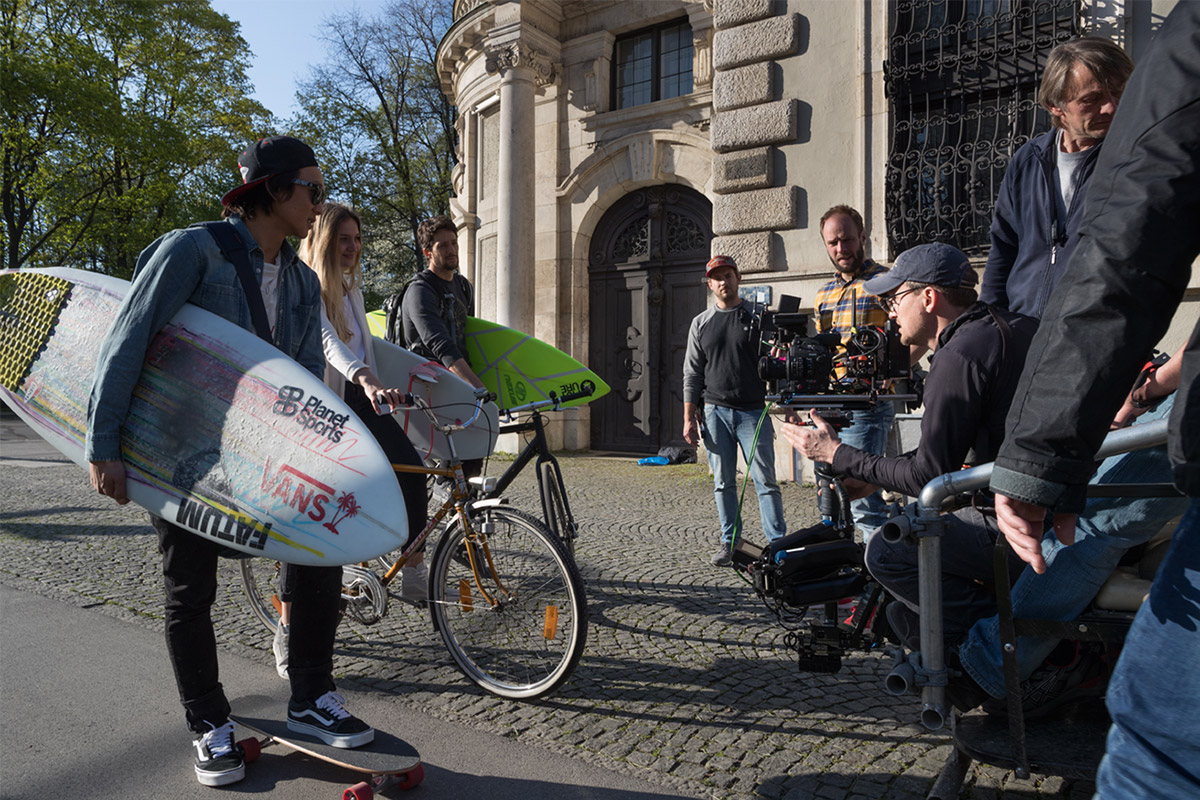
There was also a zoom rig created using three EOS C300 Mark II’s to demonstrate the benefits of an optical zoom as opposed to the digital zoom to novice photographers who may be using a smartphone. Tom explains:
“For the zoom rig I think the big challenge was that we wanted to have all three cameras to share the same vantage point. This meant we had to work with mirrored rigs normally used to shoot 3D. You also need each of these three cameras to tell different stories. In the case of our close-up we have our surfer, go slightly wider and then that could be about the surfer and the onlookers or you could go to the widest we went, which I believe was 28mm, and it becomes more of a story about the surfing community in the middle of the city. And I think that’s an interesting way to look at it, for us as filmmakers. It’s kind of cool to realise again what the difference a lens choice brings and how you tell a different story from the same perspective with a different lens”.
Finally they created the fast action rig:
“And then we had the fast action rig which is pretty cool because you have a lot of consumer cameras that allow you to shoot video and take stills from that video but obviously we wanted to show them the quality of photos, especially Canon photos in this case, which you cannot take from video”.
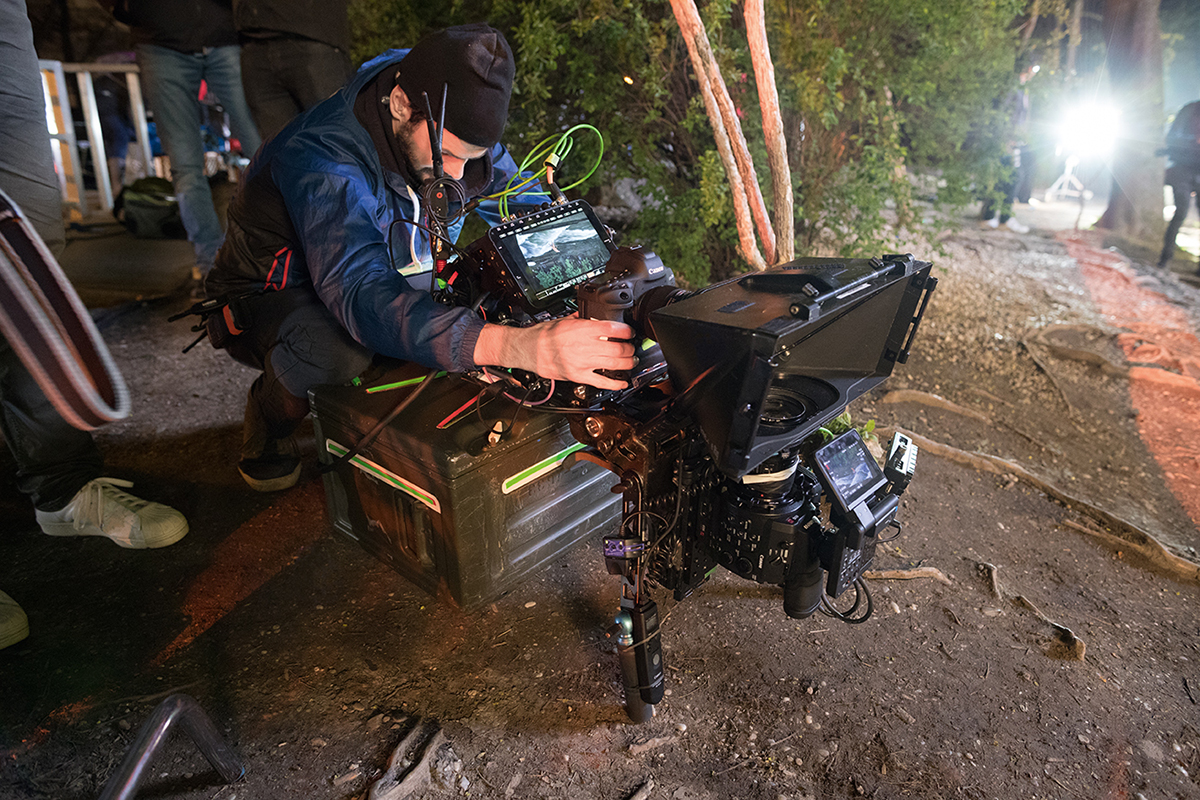
Beyond the tech, the thing that is really allowing us to create this incredible experience is the physical performance of our surfers. Tom is clearly impressed with them:
“Alex and Karina are just really sweet people and great surfers and Tao, he was fantastic. At some point I joked and asked him to come a little bit closer towards us on his board which was literally going against the might of the wave and he did it, he came a little bit closer. It was ridiculous the things he could do and the total control he had over his board and the control he had over the river itself. Take after take, he just delivered, did his job, timed it perfectly with our crane, it was insane and very impressive to see”.
Action with EOS
When it came to the EOS C300 Mark II, Serge felt as if he were stepping into familiar shoes, albeit new shiny ones.
“The C300 Mark II is a camera that is very familiar. Canon have been, in my opinion, great about this because they haven’t changed the size and body weight. They also haven’t changed the orientation of the buttons on the camera which makes the camera familiar to anybody that has used their previous versions”.
Though there are plenty of new features worth shouting about, Serge picked up on these points:
“The C300 Mark II shoots internally in 4k which is a big deal – you know a lot of cameras need external equipment to be able to shoot 4k. The internal menu system has also been refined which makes it a lot more fluid to use. You don’t have to scroll through several pages to get where you want to get to”.
When it came to the specific requirements of the City Surfer shoot however this where the EOS C300 Mark II really shone:
“I found the C300 Mark II a really great camera to shoot in low light. It dealt with the darkness really well. It’s also got a great dynamic range for daylight and for situations like the river where we had lots of very bright highlights from the sun and when our lights hit the top of the water. We lit the surfer with quite a lot of back light to try to separate them; the camera dealt with the darkness of the background and the highlights on the surfer without any issues at all.”
One of the latest additions to this film camera is the Dual Pixel CMOS AF which Serge had the opportunity to play with:
“I had a chance to be able to experience the autofocus of the C300 Mark II whilst I was in the testing stages and also in between takes. I was very impressed by it. It was on a par with stills camera’s auto focus as far as I’m concerned”.
The EOS C300 Mark II also helped the team get one step ahead when it came to post production; as Serge explains:
“We used the Canon Log 2 which is a great gamma setting. It allows us to really push the camera to its maximum knowing that we will get a great image and be able to recover anything back to its original state in the post-production stage”.
Tom sums this up for us perfectly:
“There’s a lot of information in the blacks and the whites. Colourwise there are allot of ways to go in post which is really important when shooting film, especially if it's commercial, high quality, professional film. I think for us, it was the perfect camera.”
Explore our City Surfer interactive experience here.
 Canon
Canon